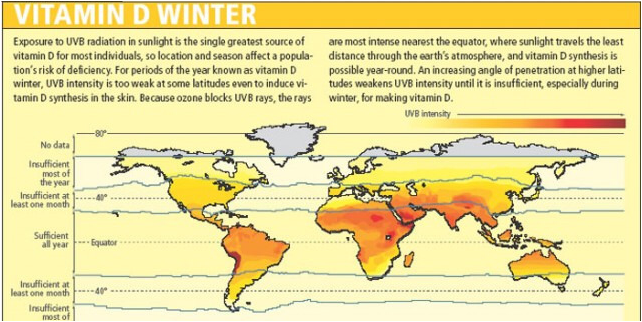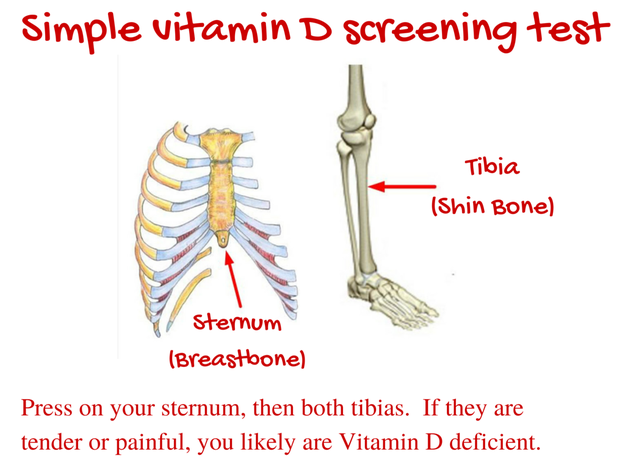What dose of vitamin d should you take?
The Daily Dose of Vitamin D you should take depends on 1) the Vitamin D Level you want to achieve, and 2) your current Vitamin D Levels. Your Vitamin D Level is of more importance than the dose, as indicated in the following groundbreaking research on the impact of Vitamin D on Heart Health:
"the improvements seen in patients taking the vitamin were “nothing short of amazing,” . . . a “significant breakthrough.”
“It's not about the tablet per se, it's about the vitamin D levels which you achieve. The difficulty is actually reaching these levels in a normal western society.”
What Level of Vitamin D is Optimal?
There is currently ongoing debate as to the optimal level (and dosage) of Vitamin D. Vitamin D levels are measured in nanograms per milliliter (ng/mL) of 25-hydroxyvitamin D, the active form of Vitamin D3 circulating in the bloodstream. Various studies have noted or targeted Vitamin D Level requirements or recommendations for specific areas as noted below.
Breastfeeding: Level required for Vitamin D to pass through mother's milk: ~ 50 ng/ml
Parathyroid production factor: ~ 50 ng/ml
Level noted of tribes approximating ancestral humans: ~ 50 ng/ml
Optimizing sleep: ~ 60 ng/ml
Cancer Prevention ~ 40 ng/ml and higher
These studies lead researchers to recommend that levels in the 50 to 80 ng/ml, and perhaps even higher, should be targeted for optimizing physical as well as mental health.
A daily dose of 5000 IU of Vitamin D is believed to correspond to a blood level approximating 50 ng/ml for most people. However, this varies by individual based on various factors. See further discussion below.
Click on on the buttons below for studies and research info on Optimal Levels.
Breastfeeding: Level required for Vitamin D to pass through mother's milk: ~ 50 ng/ml
Parathyroid production factor: ~ 50 ng/ml
Level noted of tribes approximating ancestral humans: ~ 50 ng/ml
Optimizing sleep: ~ 60 ng/ml
Cancer Prevention ~ 40 ng/ml and higher
These studies lead researchers to recommend that levels in the 50 to 80 ng/ml, and perhaps even higher, should be targeted for optimizing physical as well as mental health.
A daily dose of 5000 IU of Vitamin D is believed to correspond to a blood level approximating 50 ng/ml for most people. However, this varies by individual based on various factors. See further discussion below.
Click on on the buttons below for studies and research info on Optimal Levels.
Why are VITAMIN D Supplements Needed?
A number of factors, as further described below, lead to a deficiency of Vitamin D for the majority of the US population, and make it necessary for most of us to supplement with Vitamin D.
Vitamin D Winter
Most US latitudes are covered by a "Vitamin D winter" part of the year. Our planet is tilted so as we go further north or south from the equator less direct sunlight reaches the ground. The increasing angle means more atmosphere sunlight must travel through to reach us, and more of the UVB rays that make Vitamin D are filtered out.
Aging Impact
Every decade our vitamin D production (per hour of sun exposure) goes down.
Skin Color
Skin color is determined by the amount of melanin or pigment in the skin. Melanin shields the skin from the sun, so the more melanin (or darker skin) you have, the less vitamin D you will make.
Weight
If you are overweight then you need more vitamin D because vitamin D dissolves in fat. Fatty tissue absorbs and breaks down the vitamin D making it unavailable where it is needed. Overweight people also have more blood flowing to support the additional cells, so they need more vitamin D to maintain the proper concentration in their blood.
Food Sources
While Vitamin D is available through some food sources, the amount and form available make it nearly impossible to get sufficient amounts from food only. Any vitamin D contained in mushrooms or any other plant is in the form of vitamin D2, which is not the recommended form for humans. Vitamin D3, which is the form we make naturally in our skin, is only available in cholesterol-rich animal foods, including fatty fish (such as cod liver oil). It is a significant challenge for most people to get enough Vitamin D3 from food sources, but impossible for those following a vegetarian based diet.
Other Factors Affecting Vitamin D Levels
Most people live and work indoors behind glass windows, and wear clothing and sunblock when outdoors, all of which block the sun's UVB rays, and hence block natural Vitamin D production.
How Do I Know if I Have Enough?
Testing your blood is the only way to know. Medicare may pay for vitamin D levels if a billing code of 268.9 (vitamin D deficiency) is used on the lab slip.
A couple organizations provide a self test kit for about $50.
A couple organizations provide a self test kit for about $50.
|
Is there a simpler way to predict deficiency?
|
There is a simple screening test you can read more about at the link to the right. This is only a rough indication whether you lack sufficient Vitamin D for proper bone health.
|
Information on Supplements:
What Form of D? Answer: D3
Make sure what you take is D3, Cholecalciferol.
Vitamin D2 is for plants, or rats and other sun fearing animals. Humans obtain vitamin D3 from the sun, and from vitamin D-rich fatty animal foods. D3 is the form humans have produced and consumed throughout our evolution. D2 (ergocalciferol) is derived from plant sources by activating ergosterol with ultraviolet light. It is not naturally present in the human body. Studies have shown D3 to be approximately 87% more potent in raising and maintaining levels of Vitamin D in the blood.
Vitamin D2 is for plants, or rats and other sun fearing animals. Humans obtain vitamin D3 from the sun, and from vitamin D-rich fatty animal foods. D3 is the form humans have produced and consumed throughout our evolution. D2 (ergocalciferol) is derived from plant sources by activating ergosterol with ultraviolet light. It is not naturally present in the human body. Studies have shown D3 to be approximately 87% more potent in raising and maintaining levels of Vitamin D in the blood.
Daily Dose? How much D Should I take?
Leading Vitamin D researchers suggest 5000 IU of D3 daily would be appropriate for most people. However, individual circumstances vary, and the only way to determine the optimal amount is with testing, and consultation with a health expert.
|
Dosage discussion: Carole Baggerly and Dr. Mercola. Click button to view.
|
Cofactors
There are several cofactors that vitamin D must have to do its job properly.
Magnesium and Vitamin K are considered primary co-factors. Others include zinc, vitamin B-2, and boron.
Increasing the amount of vitamin D, via supplementation, in the presence of inadequate levels of vitamin K, can increase the risk of calcium deposition in arteries and soft tissue and have a negative effect on artery elasticity.
Together, Vitamin D and Its co-factors make a great team.
Magnesium and Vitamin K are considered primary co-factors. Others include zinc, vitamin B-2, and boron.
Increasing the amount of vitamin D, via supplementation, in the presence of inadequate levels of vitamin K, can increase the risk of calcium deposition in arteries and soft tissue and have a negative effect on artery elasticity.
Together, Vitamin D and Its co-factors make a great team.
Vitamin D Protocols
Several groups have assembled a Protocol as a general guide and starting point for supplementation with Vitamin D and its co-factors.
|
Links to Vitamin D Protocols:
|
Secondary Deficiencies
A deficiency in Vitamin D can lead to secondary deficiencies of nutrients that are dependent on Vitamin D for production, synthesis, or absorption, including:
B12, Intrinsic Factor, Iron
B12, Intrinsic Factor, Iron
More Articles on Boosting Vitamin D Levels:
Click on the pictures below, which are links to articles about obtaining or boosting your Vitamin D levels.






